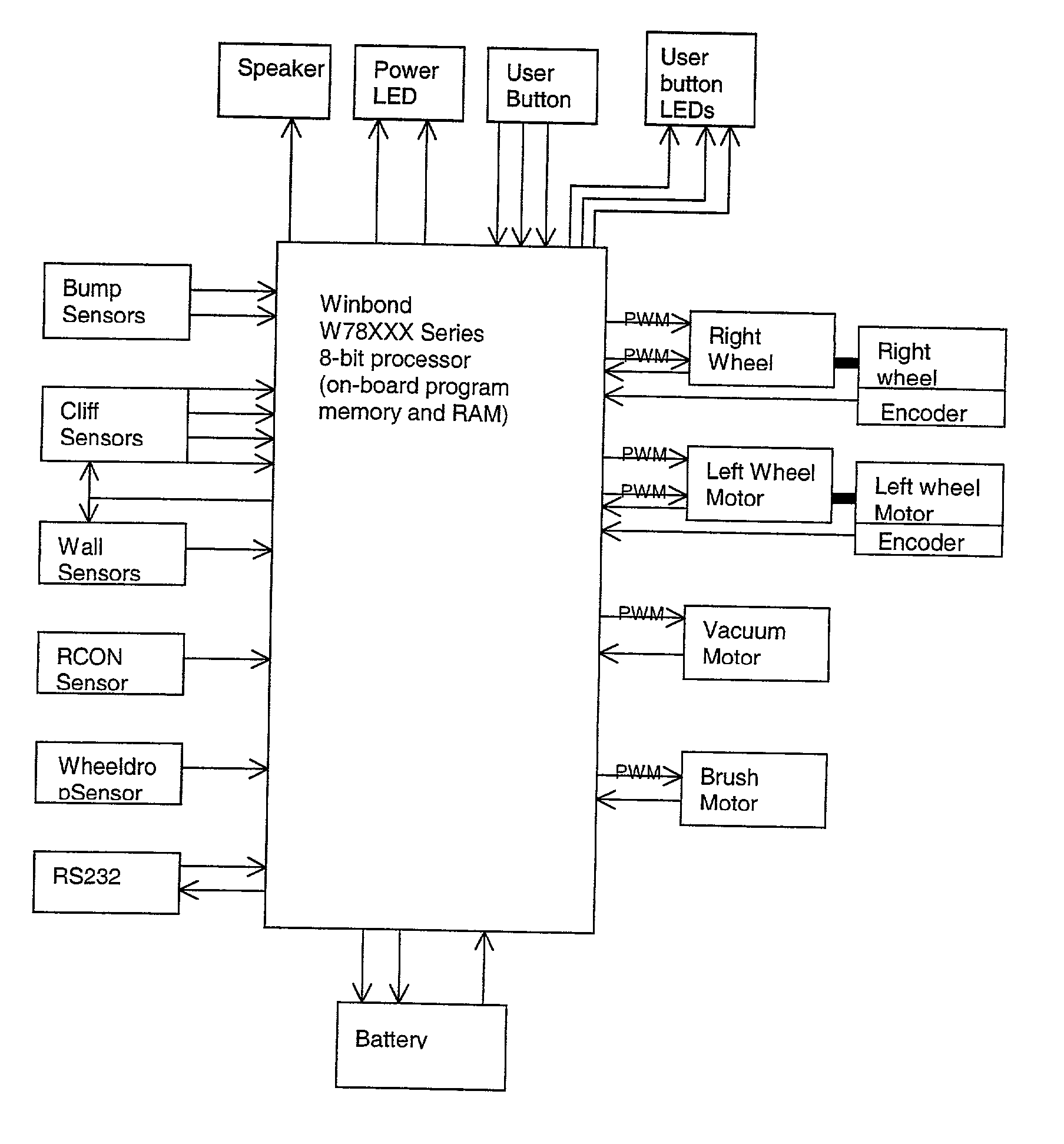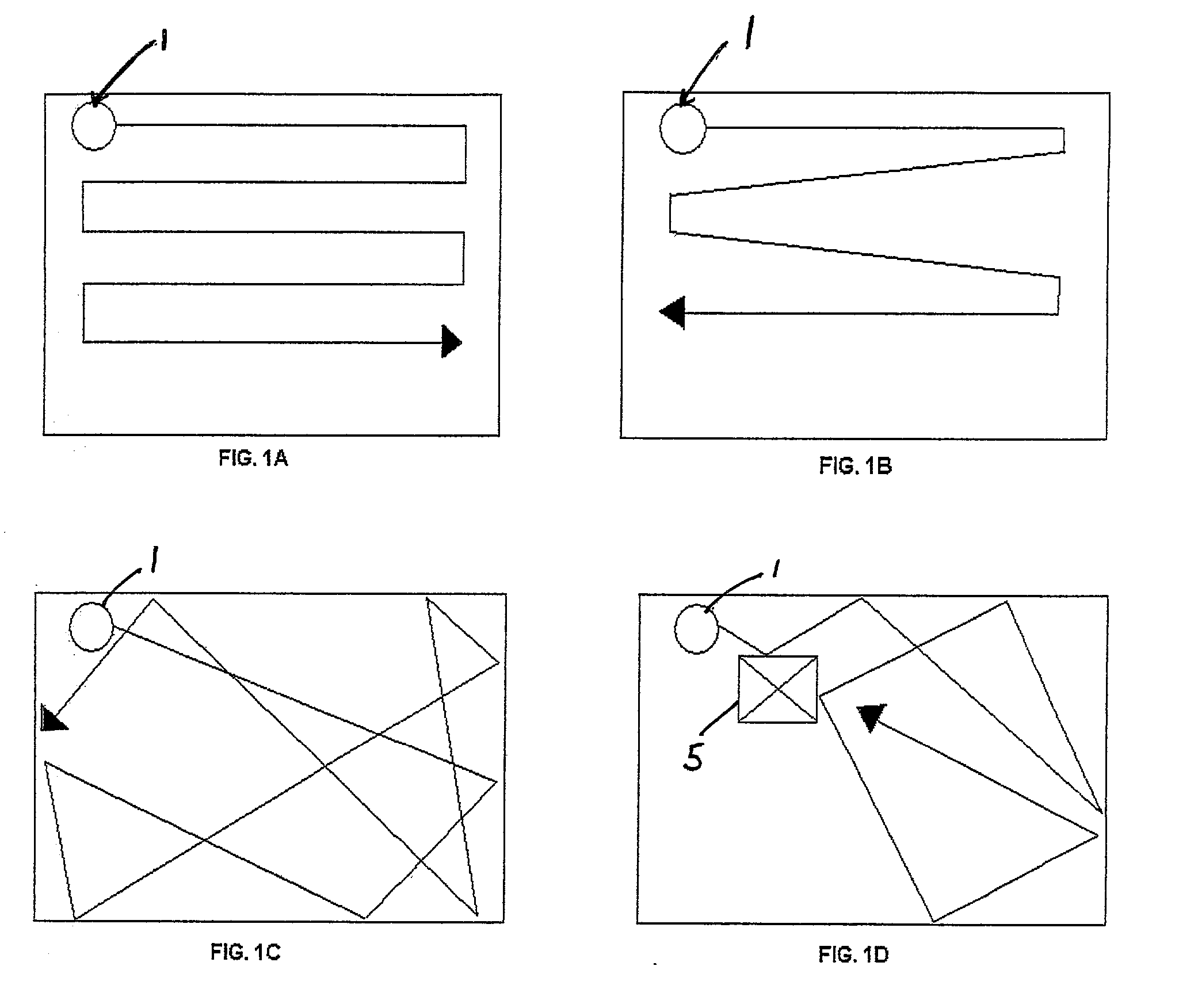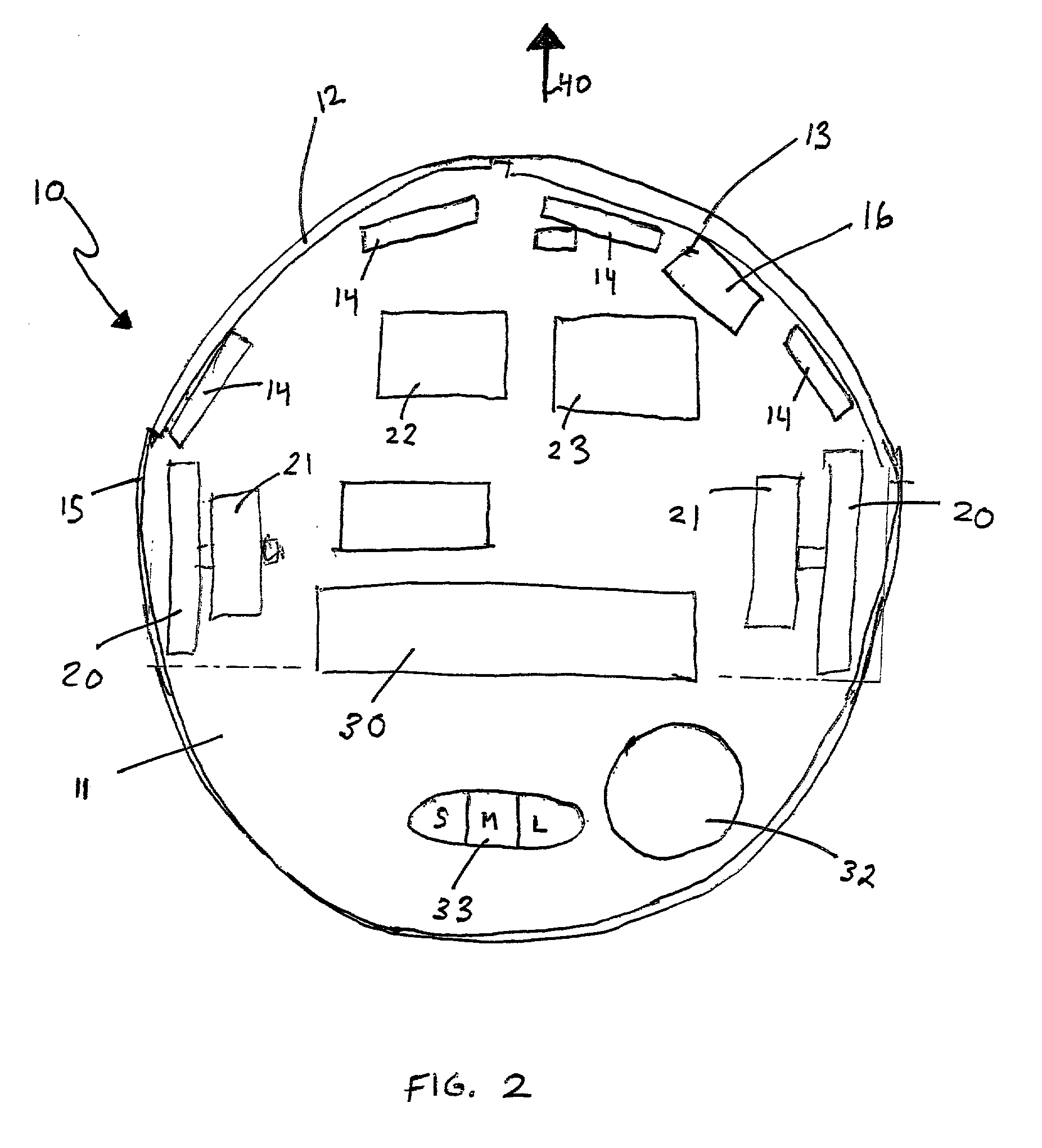Method and system for multi-mode coverage for an autonomous robot
a robot and multi-mode technology, applied in the direction of manufacturing tools, process and machine control, instruments, etc., can solve the problems of inability to vary the control of the robot, the robot may become trapped, and the proportion of the area uncovered, so as to optimize the distance the robot travels and effectively cover the area
- Summary
- Abstract
- Description
- Claims
- Application Information
AI Technical Summary
Problems solved by technology
Method used
Image
Examples
reference examples 1-2 , example 6
Reference Examples 1-2, Example 6 and Comparative Examples 11-13
[0076] Once the wall-following operational mode, or WALL FOLLOWING behavior of a preferred embodiment, is initiated (step 301), the robot first sets its initial value for the steering at r.sub.0. The WALL-FOLLOWING behavior then initiates the emit-detect routine in the wall-follower sensor 16 (step 310). The existence of a reflection for the IR transmitter portion of the sensor 16 translates into the existence of an object within a predetermined distance from the sensor 16. The WALL-FOLLOWING behavior then determines whether there has been a transition from a reflection (object within range) to a non-reflection (object outside of range) (step 320). If there has been a transition (in other words, the wall is now out of range), the value of r is set to its most negative value and the robot will veer slightly to the right (step 325). The robot then begins the emit-detect sequence again (step 310). If there has not been a t...
PUM
 Login to View More
Login to View More Abstract
Description
Claims
Application Information
 Login to View More
Login to View More - R&D
- Intellectual Property
- Life Sciences
- Materials
- Tech Scout
- Unparalleled Data Quality
- Higher Quality Content
- 60% Fewer Hallucinations
Browse by: Latest US Patents, China's latest patents, Technical Efficacy Thesaurus, Application Domain, Technology Topic, Popular Technical Reports.
© 2025 PatSnap. All rights reserved.Legal|Privacy policy|Modern Slavery Act Transparency Statement|Sitemap|About US| Contact US: help@patsnap.com



